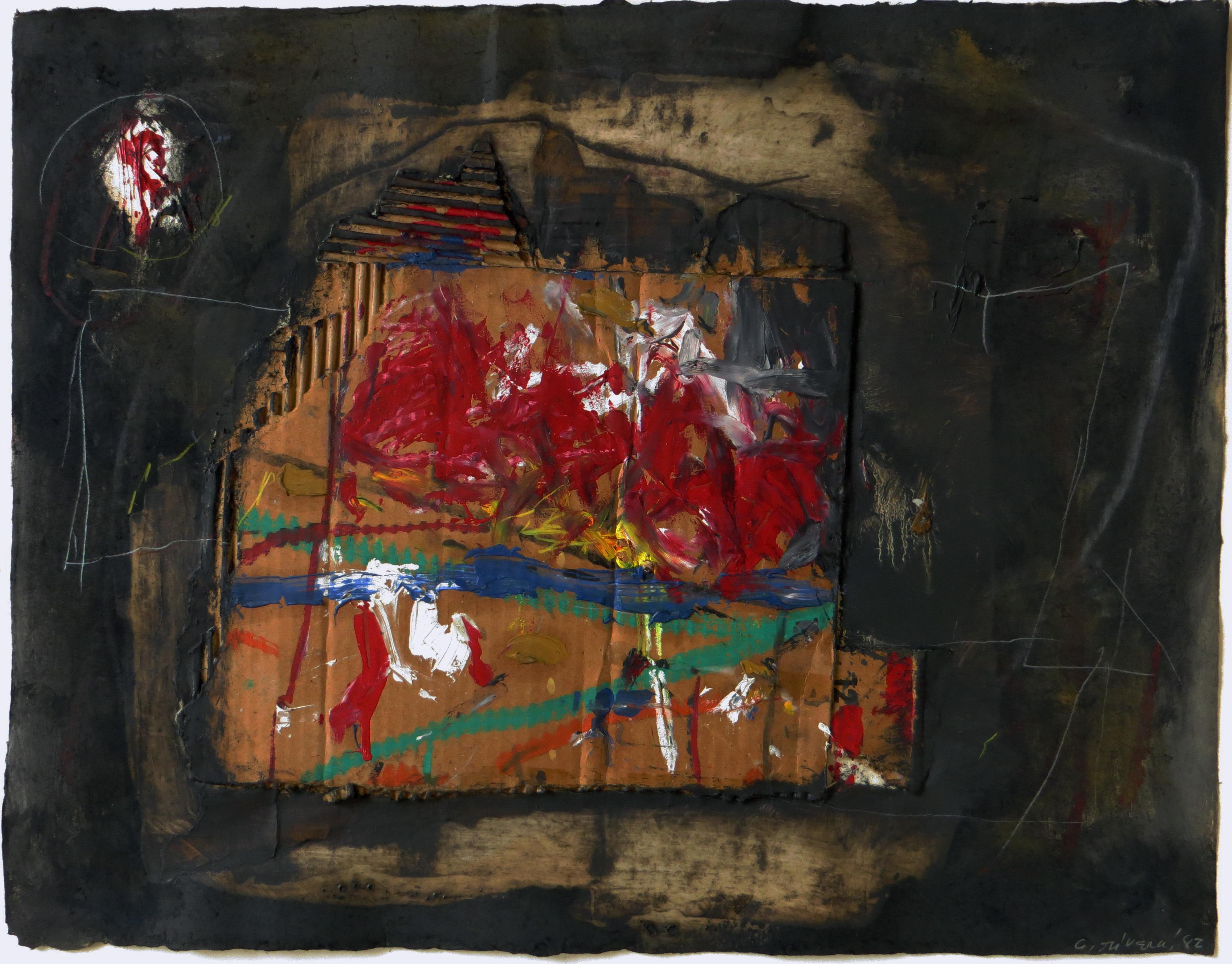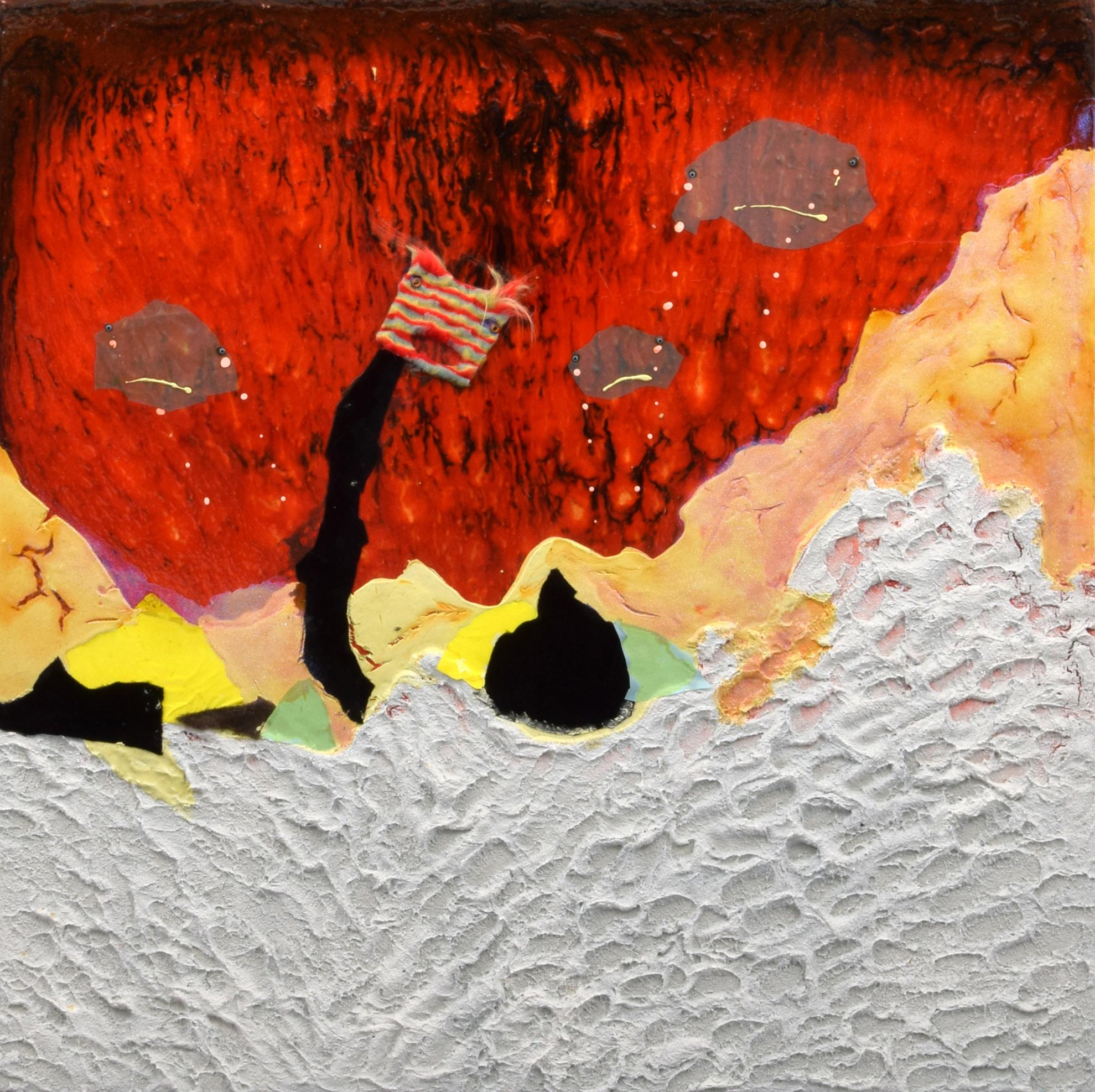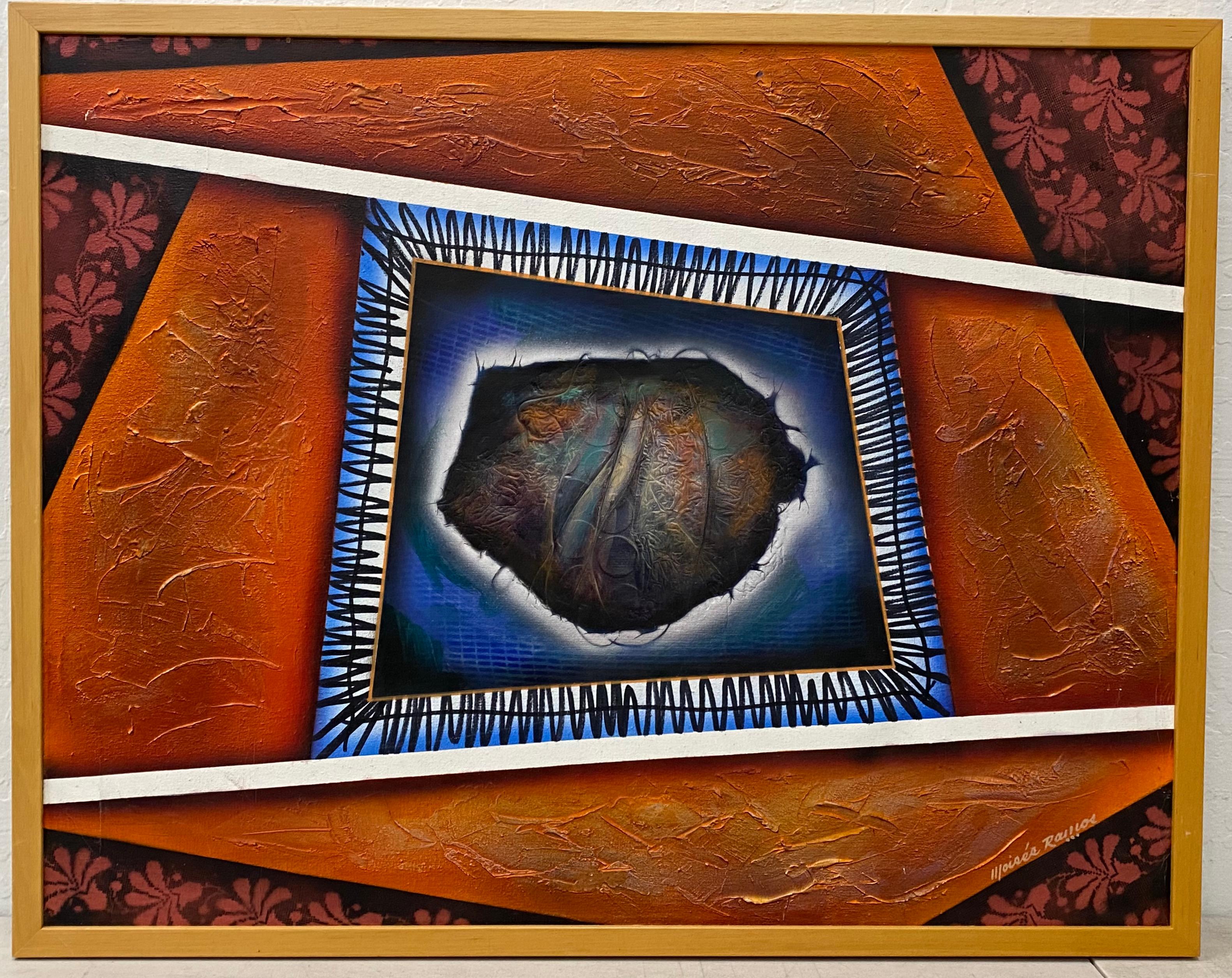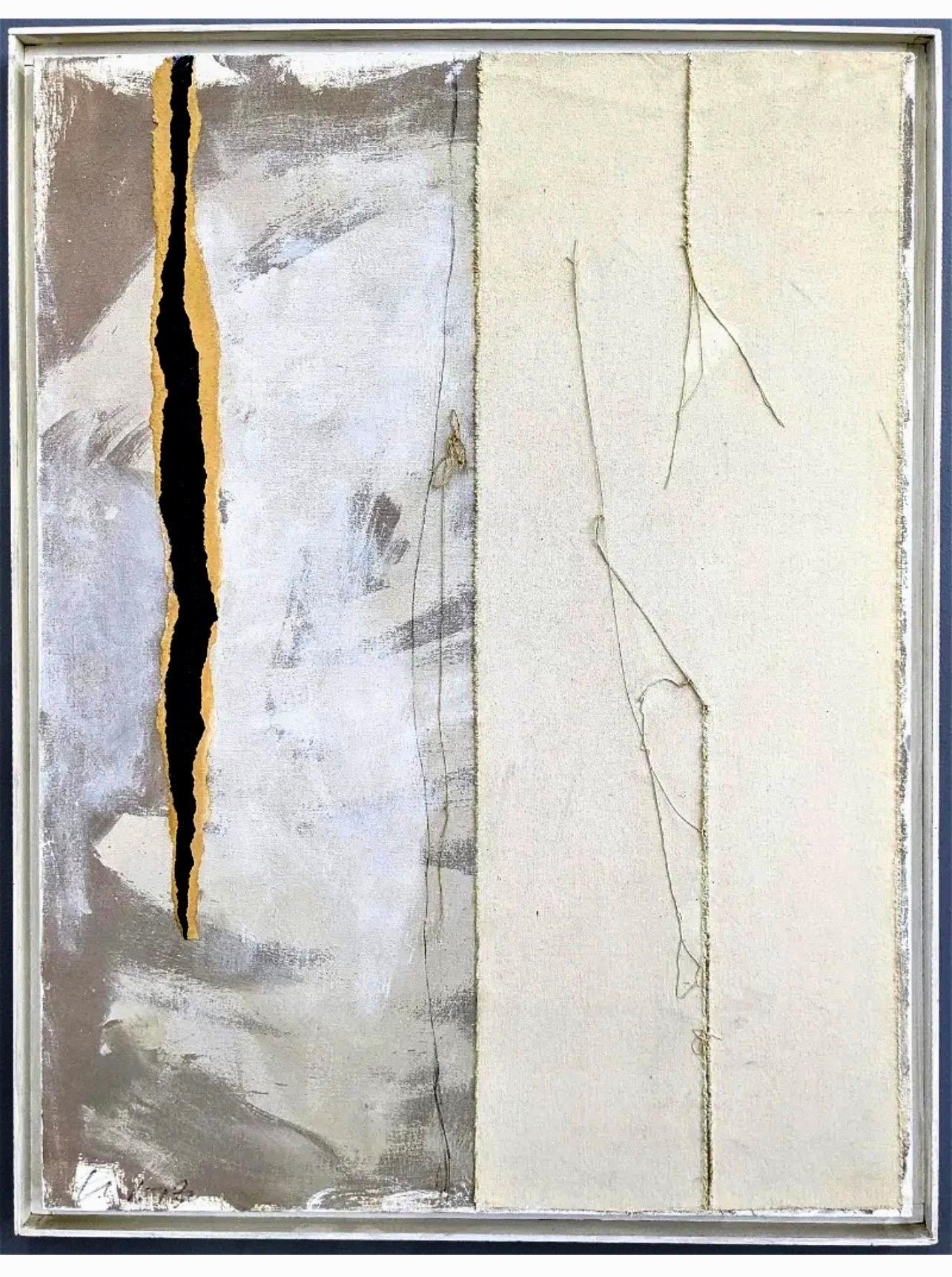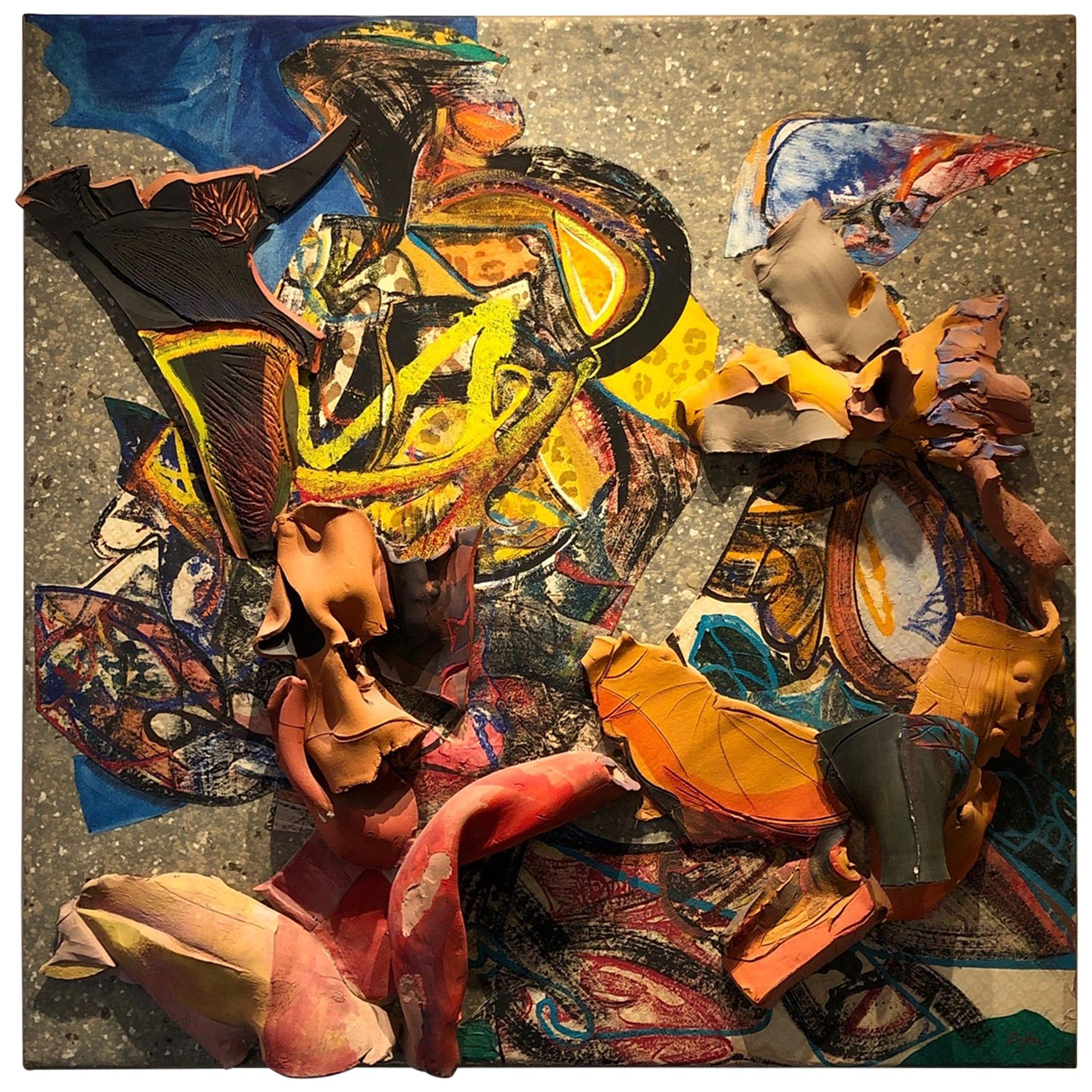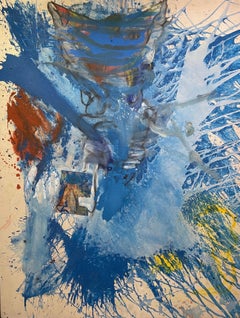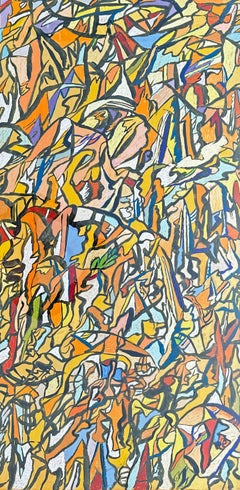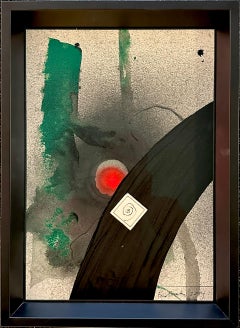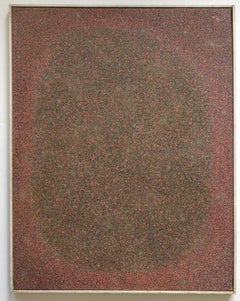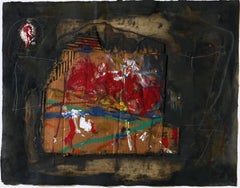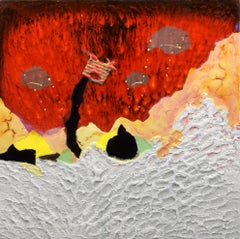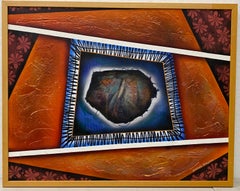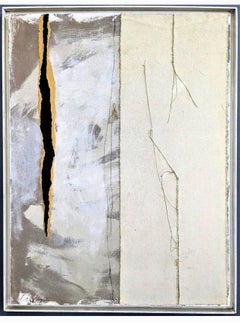Items Similar to Pyromaniac's Pyre mixed media work by Mary Spencer Nay
Want more images or videos?
Request additional images or videos from the seller
1 of 10
Mary Spencer NayPyromaniac's Pyre mixed media work by Mary Spencer Nay1974
1974
$3,000
£2,284.50
€2,608.75
CA$4,215.37
A$4,625.06
CHF 2,436.26
MX$55,020.02
NOK 31,208.22
SEK 28,497.37
DKK 19,489.88
About the Item
Signed and dated "Mary Spencer Nay '74" lower left. Titled "Pyromaniac's Pyre" verso.
Exhibited:
1976-1977 "Mary Spencer Nay: Recent and Retrospective Works". J.B. Speed Art Museum, Louisville, KY. Catalogue #38, lent by Citizens Fidelity Bank and Trust Co.
Provenance: Ex collection Citizens Fidelity Bank & Trust Company, Louisville, KY
- Creator:Mary Spencer Nay (1913 - 1993, American)
- Creation Year:1974
- Dimensions:Height: 23.25 in (59.06 cm)Width: 31.5 in (80.01 cm)
- Medium:
- Movement & Style:
- Period:
- Condition:
- Gallery Location:Hudson, NY
- Reference Number:Seller: NaMa0011stDibs: LU2465212212382
About the Seller
5.0
Vetted Professional Seller
Every seller passes strict standards for authenticity and reliability
Established in 1973
1stDibs seller since 2023
14 sales on 1stDibs
- ShippingRetrieving quote...Shipping from: Hudson, NY
- Return Policy
More From This Seller
View AllP.F.P. abstract oil collage by Bill Saylor
Located in Hudson, NY
P.F.P. (2011)
Oil on canvas with collage
Titled, signed and dated "P.F.P. / Bill Saylor / 2011" verso on canvas.
Exhibited 2017 in "Animal Farm" a group exhibition at The Brant Foun...
Category
2010s Abstract Abstract Paintings
Materials
Canvas, Mixed Media, Oil
Untitled-006 abstract painting by Fred Martin
By Fred Martin
Located in Hudson, NY
Exhibited:
2003 Oakland Museum of California "Fred Martin Retrospective"
A native Californian, Fred Martin was born in San Francisco in 1927, and received both his BA (1949) and MA (1954) from University of California, Berkley. At the San Francisco Art Institute Martin studied with Clyfford Still, Mark Rothko and David Park...
Category
1970s American Modern Abstract Paintings
Materials
Masonite, Pastel, Acrylic
Untitled-013 mixed media and collage artwork by Fred Martin
By Fred Martin
Located in Hudson, NY
Fantastic mixed media collage, created by Fred Martin as a thank you to gallery owners for their interest and support of his work.
Untitled (2014)
Mixed m...
Category
2010s Abstract Mixed Media
Materials
Paper, Mixed Media
Untitled abstract oil painting by Elaine Wesley
By Elaine Wesley
Located in Hudson, NY
Signed verso with estate stamp "Estate of Elaine Wesley/1923-2007"
Canvas measures 30 ¾" x 24" and framed measures 31 ¾" x 25"
Category
1980s Abstract Abstract Paintings
Materials
Canvas, Oil
Untitled-059 mixed media on paper by John Von Wicht
By John von Wicht
Located in Hudson, NY
This abstract artwork is one of a group of over 100 pieces personally selected by the artist, and gifted to a close personal friend in 1969. Please note that this painting was never ...
Category
1960s Abstract Expressionist Abstract Drawings and Watercolors
Materials
Paper, Mixed Media
Untitled-055 mixed media abstraction by John Von Wicht
By John von Wicht
Located in Hudson, NY
What is exceptional about this artwork is that it has never been
matted, framed, glued, taped or exposed to light. It is one of a group of over 100 pieces personally selected by the...
Category
1960s Abstract Abstract Drawings and Watercolors
Materials
Paper, Mixed Media
You May Also Like
Abstract Mixed Media Painting
By Gustavo Ramos Rivera
Located in San Francisco, CA
This vibrant abstract work is by Gustavo Ramos Rivera (1940-) The work is a mixed media composition on paper. It measures 20.5 x 26.5 inches. It is mounted on heavy matboard that measures 26 x 33 inches. There are various techniques and materials employed in the creation of this painting. Collage, drawing, painting with oil paint, pastel crayon cardboard and other materials that I cannot identify. The painting is in very good condition. The matboard mounting has a bit of time stain on the edges. It is not presently framed.
Gustavo Ramos Rivera was born in Ciudad Acuna, Mexico in 1940, and immigrated to the United States in 1969. He has lived and worked in San Francisco for over 40 years. Ramos Rivera’s work is in the permanent collections of prominent institutions including the Fine Arts Museum of San Francisco, The Mexican Museum in San Francisco and The Nevada Museum of Art. In 2006, the San Jose Museum of Art presented a retrospective exhibition of the artist’s work, which then traveled to additional institutions in California and Mexico.
Through his use of color and a personal symbology, Ramos Rivera has created a language that is written throughout his paintings, monotypes, and collages. This singular expression functions on both an intellectual and emotional level and its deployment is reminiscent of the work of Paul Klee, Joan Miró, and Cy Twombly.(1) It also harkens back to the pre-Columbian Mesoamerican art...
Category
1980s Abstract Abstract Paintings
Materials
Mixed Media
Large Jonathan Pylypchuk Mixed Media, 48.75"H
Located in Lake Worth Beach, FL
Artist/Designer; Manufacturer: Jonathan (Jon) Pylypchuk (b. 1972)
Marking(s); notes: 2002 (per gallery label)
Country of origin; materials: Canadian; mixed media on panel
Dimensions ...
Category
Early 2000s Contemporary Abstract Paintings
Materials
Mixed Media, Panel
$5,200 Sale Price
20% Off
Moises Ramos Mixed Media Abstract Painting 20th Century
Located in San Francisco, CA
Moises Ramos Mixed Media Abstract Painting 20th Century
Mixed media with oils and acrylics on canvas
Canvas dimensions 29" wide x 22.5" high
The frame measures 30.25" wide x 24" h...
Category
Late 20th Century Abstract Abstract Paintings
Materials
Canvas, Oil, Acrylic
Mixed Media Collage Oil Painting Latvian American Modernist Artist Adja Yunkers
By Adja Yunkers
Located in Surfside, FL
Adja Yunkers, Latvian/American, 1900-1983.
1973
Mixed media collage painting with applied threads on canvas,
Titled "Collage #67".
Initialed "A. Y." and dated "'73" lower left, ...
Category
1970s Abstract Expressionist Abstract Paintings
Materials
Mixed Media, Fabric, Oil
Original Mixed-Media Abstract Painting by Listed Artist Josh Dayton
By Dayton
Located in Palm Springs, CA
Original mixed-media abstract painting by American listed artist Josh Dayton.
Spectacular three dimensional sculptural mixed-media abstract painting that ...
Category
1990s American Modern Contemporary Art
Materials
Ceramic, Canvas, Acrylic, Paper, Crayon
Abstract Mixed Media Painting
By Dick Wray
Located in Houston, TX
Mixed media work with various animals and the phrase, "very restful here...".
Artist Biography: Dick Wray, a native Houstonian,born in Heights Hospital in 1933 was primarily educat...
Category
1990s Modern Abstract Paintings
Materials
Acrylic, Photographic Paper
